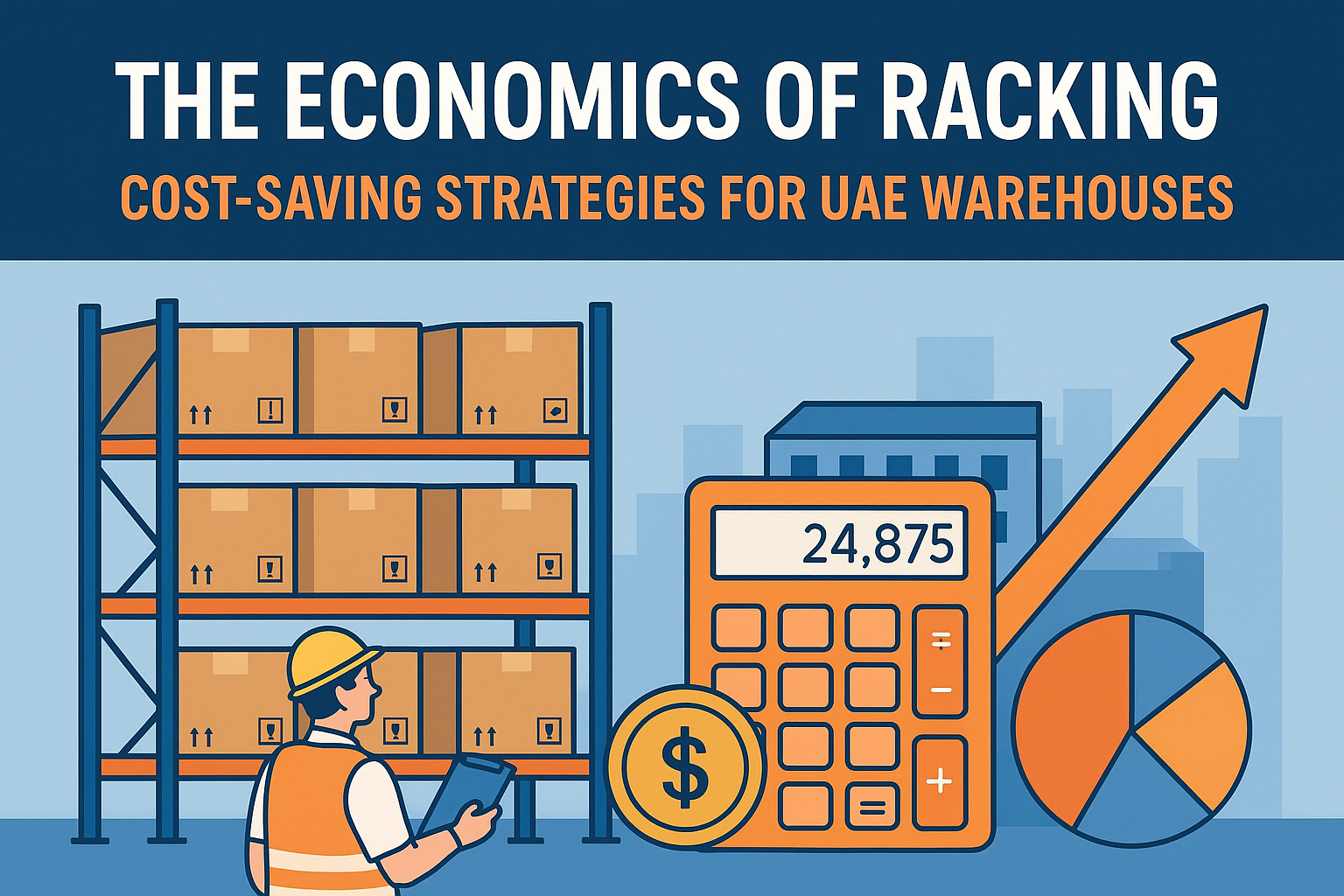
Warehouse operations in the UAE are evolving rapidly with the growth of e-commerce, retail, and logistics. As demand for efficient storage solutions rises, the cost of racking systems has become a central concern for business owners. While investing in the right racking infrastructure can be expensive, it’s also one of the most critical drivers of efficiency, safety, and long-term profitability.
This article explores the economics of warehouse racking in the UAE, focusing on strategies to optimize costs, maximize ROI, and ensure long-term durability without compromising safety or compliance.
Why Warehouse Racking Costs Matter in the UAE
1. A High-Growth Logistics Market
The UAE, with Dubai as a logistics hub, is witnessing exponential growth in e-commerce and supply chain activities. Efficient racking is no longer optional it’s a necessity.
2. Hidden Costs Beyond Installation
- Maintenance and inspection costs
- Safety upgrades to comply with UAE regulations
- Insurance premiums (linked to racking safety)
- Replacement of damaged racks
3. ROI Perspective
Every dirham invested in racking has to deliver value over time. Cost optimization isn’t just about buying cheaper it’s about ensuring longevity and efficiency.
Key Factors Influencing Warehouse Racking Cost in UAE
- Type of Racking System – Pallet racking, drive-in racks, cantilever racks, or automated systems vary widely in price.
- Warehouse Layout & Space Utilization – Poorly designed layouts increase installation and reconfiguration costs.
- Load Requirements – Heavier loads demand stronger (and more expensive) steel racking.
- Compliance & Safety Standards – UAE warehouse safety standards require certified racking systems, impacting upfront investment.
- Supplier Selection – Local vs imported racking solutions can significantly alter pricing.
Cost-Saving Strategies for UAE Warehouses
1. Invest in Scalable Systems
Avoid overspending upfront by selecting modular and expandable racking systems. This ensures scalability without a complete overhaul as your operations grow.
2. Optimize Layout for Maximum Space
Using professional warehouse planners or CAD design can help reduce wasted space, leading to better ROI per square meter.
3. Prioritize Preventive Maintenance
Routine inspections and early damage detection reduce replacement costs. A preventive maintenance plan is more cost-effective than reactive repairs.
4. Buy Quality Once, Not Twice
Cheap racking may reduce initial expenses but leads to higher long-term costs due to frequent replacements, safety risks, and insurance liabilities.
5. Consider Local Manufacturing
Sourcing from UAE-based racking suppliers often lowers logistics and customs charges, while ensuring faster replacement parts.
6. Explore Financing Options
Leasing or phased investment in racking can spread costs and preserve cash flow, especially for SMEs.
7. Use Technology for Inventory Optimization
Adopting Warehouse Management Systems (WMS) reduces excess inventory and ensures racks are used efficiently.
Case Study: Cost Savings in a Dubai Distribution Center
A mid-sized FMCG warehouse in Dubai reduced its racking investment cost by 18% by:
- Switching to modular pallet racking systems
- Negotiating local supplier contracts
- Implementing quarterly rack inspections
Result: Reduced insurance premiums, lower downtime, and better utilization of cubic space.
The ROI of Racking: Beyond Upfront Costs
When calculating warehouse racking cost in UAE, businesses must consider ROI factors such as:
- Increased storage density (more products per sq. meter)
- Faster retrieval times (improved labor efficiency)
- Reduced damage to goods (lower shrinkage)
- Lower insurance premiums due to certified safe racking
Investing strategically means turning racking from an expense into a long-term profit driver.
FAQs
Q1. How much does warehouse racking cost in UAE?
Costs vary depending on type, load capacity, and supplier. Basic pallet racks start from AED X per pallet position, while advanced automated systems cost significantly more.
Q2. Is it cheaper to import racks or buy locally in the UAE?
Local suppliers often provide cost advantages due to reduced shipping and import duties, plus faster replacement options.
Q3. How can warehouses reduce long-term racking costs?
Through preventive maintenance, scalable designs, and investing in high-quality certified racking systems.
Q4. Do UAE regulations affect warehouse racking costs?
Yes. Compliance with UAE fire safety and occupational health regulations requires certified systems, which may increase initial costs but reduce risk and insurance premiums.
Q5. What’s the average ROI period for warehouse racking in UAE?
Typically 3–5 years, depending on usage intensity and maintenance.
The economics of warehouse racking in the UAE go far beyond purchase price. By adopting smart strategies like investing in scalable designs, working with local suppliers, and prioritizing safety businesses can achieve significant cost savings while ensuring efficiency and compliance.
In a market like Dubai, where logistics is the backbone of trade, investing wisely in racking systems is not just about cutting costs it’s about building a competitive edge.